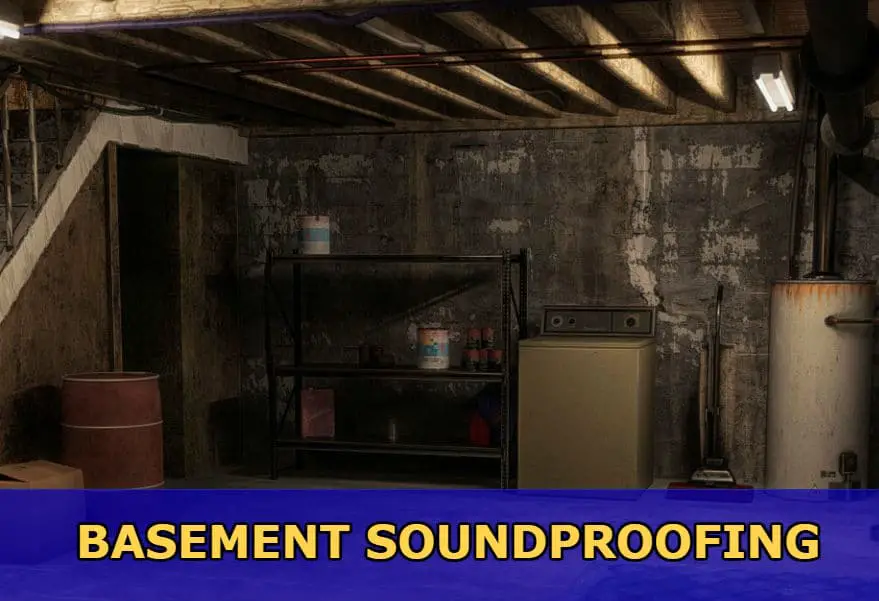Have you ever wondered what life would be like with a room in your house used only for recreational purposes as a home theater? Or maybe you wanted to create a studio room? I know I did. You don’t need to use the living or waste a whole room for that.
You can use something as simple as a basement. Before you do that though, you have to make sure you won’t bother anyone from the house, so, in the next lines, I’m going to tell you how to soundproof a townhouse basement.
Introduction
There are a lot of ways you can do this, but before you get up from the bed and get to work, you need to make a quick plan. One of the most important things in soundproofing a room is budgeting.
Because you choose your basement, the price will not be too high and you can invest in some quality, specially-made materials. Why is that? In a basement, the only area you will usually need to soundproof is the ceiling.
Usually, the ceiling in a basement is only bare rafters. That allows a lot of sounds to be transmitted both ways, up and down. In our everyday life, we only come across 2 types of noise: airborne and impact noise.
For example, a guitar-playing or a conversation from upstairs are both airborne noises. On the other hand, footsteps or earthquakes are impact noises. The goal is to make a room that is very quiet from the inside and outside.
Basic principles
The basic principles of soundproofing your basement are:
- because the sound propagates in waves of energy, you will need to stop the waves from advancing in order to stop the sound
- make the sounds go around corners to lose energy
- use some dissimilar materials
- decouple the room from the main structure
Some of them are more costly than others, and I suppose you came here because you are on a budget. Usually, wealthy people just go to a specialized website and order all the products from there and even call some workers to install them.
Money makes people very lazy, and you definitely don’t want that. Firstly, I’m going to present to you some really cheap and fast methods, then I’m going to tell you about the more complicated, but more efficient, methods.
Cheap methods
The first method that came in my mind may seem silly, but it actually works in case you just wanted a quiet room where you can relax. The method is laying some carpets or moving them in order to stop some simple noises, like footsteps and TV sounds coming into the basement.
The biggest advantage of this method is that most people already own carpets, and it’s just a matter of some physical work. If you don’t, they are really cheap and easy to order, maybe you even can customize them.
The thicker they are, the more effective they will be. It’s a really good solution of stopping impact noises, and, after all, they’ll make your house prettier. The bad news is that it will not prevent noise from leaking outwards in case you wanted to create a studio or practice with your band, but we will get to that later.
The second option may seem obvious, but I am amazed at the number of people that don’t know this easy trick. Go in your basement and look on the ceiling. You might not even know about them, but there is a chance your ceiling has gaps. What do these gaps do? They allow sound to fly through there.
Sealing them is not hard and expensive at all. You can use something as simple as caulking seals, and you definitely will observe the improvement. You can buy those on Amazon for about $10. If you decide to ignore the holes, not even the priciest methods will stop the sound completely.
Another easy method would be moving your furniture. You are probably asking yourself right now: how in the world is that going to help me?
Let me help you answer that. Go in your basement and make a loud sound like screaming or playing your guitar at a really high volume, and have one more person in the room above it.
That should easily indicate the areas where the most sound is propagated. All you have to do then is move your chunky furniture there. Trust me, it will make a huge difference. That costs 0 money.
However, it depends on your loudest sound area. If it is in a corner, jackpot, but you can’t place a closet in the middle of the room just to make the basement quieter.
More effective ways
If you want something more effective, you can try soundproof panels, which you can find on the internet. The price may shock you a little, but fear not, it isn’t as bad as you think.
Remember, you are in the basement. The only part you worry about is the ceiling. You will also notice there are a lot of types of panels. I will tell you about the most popular ones.
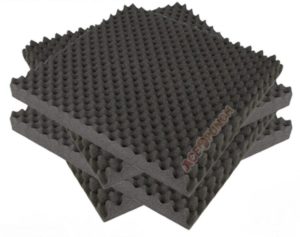
Soundproofing egg crate
Burton Acoustic’s panels, which are soundproof foam panels (check price on Amazon), are your best friends with this method. You can find them on Amazon for about $35 per pack, and the pack has 4 pieces. As you can see from the images, this is the professional gear that studios use for soundproofing. They are very light as well, just under 2 pounds (about 900 grams), which means you can even tape them on the ceiling. Just make sure you use the right tape.
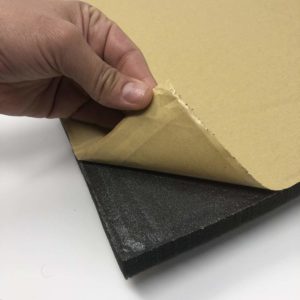
MusiQ Resource’s RESON8
Another great product is MusiQ Resource’s RESON8 foam (check price on Amazon) if you want to spend a little less money. It’s not as effective as the earlier foam but still does its job.
It even comes with an amazing feature: peel and stick. This will also save the money you were going to spend on tape because it does exactly what you think. You just peel off the material, and it will stick to the ceiling.
Even if it isn’t that effective, it does work better for echo reduction if you are planning on building a home studio.
The next best option, but also pricier, are the wooden panels from ATS Acoustics (check price on Amazon). They have a really nice design and definitely will add a little style to your boring basement. However, make sure you mount them really well, you don’t want to wake up with such a hard block smashing on your head. They need to be affixed to the ceiling.
What are the advantages of these options? This is one of the most effective ways to stop noise from leaking outwards, reduces echo, and also will make a song recorded in there sound angelic. With the right person singing, of course.
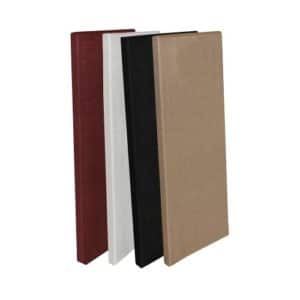
Acoustic Panels
The downsides of those are the sound that will leak inward, and, of course, the price.
Special materials
One of the best materials you can use for an almost completely soundproof basement is insulation. You can even use regular ceiling insulation, but once you get some acoustic insulation, you will feel the full difference, even though they are the same thickness.
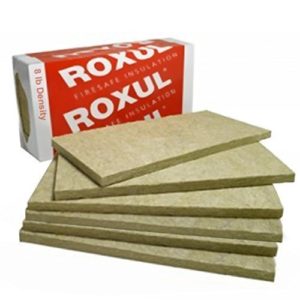
Soundproofing with Mineral Wool Panels
The one that I recommend is Mineral Wool Insulation from Roxul (check price on Amazon). It is really easy to mount as well, just cut the insulation panels so they can fit the joist cavities. Then just press them in between the joists.
You should keep in mind that the insulation needs to be light, not jammed, and make sure you don’t let it be too tight to the ceiling.
The next material you should consider is MLV (Mass Loaded Vinyl). It is really popular and used in a lot of workings. What makes MLV a sound blocker material? Its main elements are vinyl and a high mass element that gives the material enough density and acts as a sound barrier.
How to install MLV
There isn’t much to say about the installation itself because it is really easy. The disadvantage of the material is that it requires 2 people to install properly. So, if you are looking to surprise your wife when she gets home, you are going to need to call a friend.
You can even ask a kid for help because the only thing that the second person should do is just holding the mats in place. You can start installing it in any corner but always watch out so the sheets are straight along with the ceiling.
There are some tips you should keep in mind when doing this in order to make sure everything stays in place. Place some fasteners every 10 inches or less, so the MLV will stay there. Try to end all seams on joists as well. Whenever the seams fall on the joist, you can add a strip of vinyl.
You should always apply MLV directly to the ceiling joists and under the drywall when possible. Don’t start ruining your basement by destroying the drywall if it is already installed. If there is no other way, you should attach materials directly on top of it.
A quick reminder for those who really care about the design of their basement, you should consider that this material comes in black only. If you are trying to make a colorful and happy looking basement, my advice is to use another method.
Conclusion
Overall, there are plenty of ways you could turn your basement into your childhood dream. However, I repeat, you should first consider how effective you want the soundproof basement to be and how much money you are willing to spend.
If you want an effortless method that is going to make your basement 100% soundproof, I’m afraid I am going to disappoint you. There is no such thing.
Although with some quality materials, a little sweat, and some dollars spent, you can nail a very nice project. What was your experience with your basement? Share your story with us so you can help others with their work!
